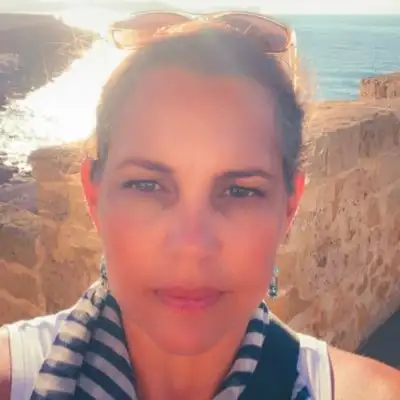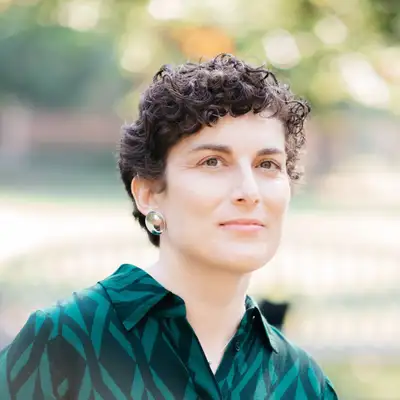Episode 6: Astrid Weins on Anti-Nephrin Antibodies and Nephropathology
Episode 6: Astrid Weins on Anti-Nephrin Antibodies and Nephropathology
===
[00:00:00] Laurel Damashek: Welcome to GN in Ten, a bite sized podcast brought to you by the International Society of Glomerular Disease. Our hosts are nephrologists and glomerular disease experts Dr. Kenar Jhaveri of Northwell Health and Hofstra University on Long Island, New York, and Dr. Koyal Jain from the University of North Carolina Chapel Hill.
[00:00:24] Koyal Jain: Welcome everybody. We are so excited. These are your favorite hosts, Koyal Jain and Kenar Jhaveri, who are here with your ISGD GN in Ten podcast. We have a very special guest today, Dr. Weins. Thank you so much for joining us today.
Why don't you tell us a little bit about yourself?
[00:00:41] Astrid Weins: Hi everyone, thanks for having me. I love this kind of podcast. It's great. A little bit about myself. I came to the U. S. about 20 years ago. And at the time I was extremely inspired by my German mentors, Dr. Peter Mundel, Dr. Wilhelm Kriz, Professor Detlef Schlöndorff to pursue kidney research, and I initially came here for about two years and then wanted to go back to the U. S. to finish my continuing medical education in nephrology there, and then I ended up staying. I ended up in Martin Pollak's lab doing a lot of research on podocyte biology and genetics of podocyte diseases and then pursued a career in renal pathology here at the Brigham. I trained at the Brigham and I stayed here ever since.
[00:01:28] Kenar Jhaveri: Welcome. This is amazing to have you on this podcast and Koyal is getting better at including me in the intro. Each podcast, it gets better. It's good to have a pathologist finally on the podcast and I wanted to just highlight your work and what you brought to the nephrology world, the pathology world, the anti-nephrin antibodies.
Do you think it's the next big thing?
[00:01:48] Astrid Weins: The next big thing? I think it's the current big thing! For me, at least it is, not to sound a little bit more humble, but jokes aside, I think we're at the start of a very fascinating new phase in nephrology and nephrotic syndrome research. And I hope that my discovery at least inspires people to look at this disease in a new way, because we've been doing the same things for the past 20, 30, 40 years, and I think it's time to change it up.
And that's what I see as the excitement of our discovery.
[00:02:25] Koyal Jain: Awesome. I'm so glad that you're looking towards the future and advancing the field. Do you check these anti-nephrin antibodies in the sera and pathology specimens every single time? And if people don't have the ability to do what do you recommend?
[00:02:36] Astrid Weins: So in the pathology specimens, obviously, yes we look for the features of anti-nephrin being present in the tissue and we can see that by recognizing this podocyte dusting that my mentor here, Dr. Helmut Rennke, has been describing for about 25 years and he's the one who recognized it's present in the vast majority of cases of minimal change disease.
So we do that definitely routinely. We now also routinely stain for IgG and nephrin together in the biopsy when we do see this feature, just to make sure and confirm that the staining is co localizing with nephrin and really represents tissue staining evidence for anti-nephrin antibodies.
In terms of the serum sampling at the Brigham and within our system, we have the ability to pull these samples and test them on a research basis on our ELISA in my lab. For the outside patients, it's a little bit more tricky since we don't really have IRB approval to approach outside patients at this time point.
And there's unfortunately not a clinical assay yet to test for anti-nephrin antibodies.
[00:03:46] Kenar Jhaveri: Amazing Astrid. Your seminal paper in JASN that really highlighted anti-nephrin antibody as a potential cause of diffuse podocytopathy. Do you see this in what we call traditionally nephrotic syndrome, FSGS, or purely in the minimal change disease world?
[00:04:08] Astrid Weins: So we've definitely had cases that were not minimal change disease that had features of primary FSGS, that had features of collapsing glomerulopathy, and that had recurrence of diffuse podocytopathy with massive proteinuria in the allograft. In all these conditions, we've seen the presence of anti-nephrin antibodies.
I have yet to see a case in any other disease other than a very occasional patient who's double positive for anti PLA2R antibodies, for example, and anti-nephrin antibodies. And they usually have a very severe form of podocyte injury and membranous as well. Otherwise I have yet to see any patient outside of these diseases that has anti-nephrin antibodies.
But we do see it in these other diseases, which to me really confirms that minimal change disease, FSGS, collapsing FSGS, and recurrence of this disease in the allograft are all really the same disease with different modifiers attached to it. So my big picture of the spectrum of podocytopathies is that you have a predisposing phenotype of the podocytes in a patient where they have maybe a genetic mutation in the background that doesn't do anything on its own, but then you add an injury to it, such as anti-nephrin antibodies or any other podocyte stressor. And then you get the disease, which is a diffuse podocytopathy, and then the next thing that you have to also look at is our factors that define how podocytes recover from this disease.
And so these three things, the predisposing underlying vulnerability of a podocyte, the triggering injury, and the factors that define how a particular podocyte or a particular patient recovers from this injury defines what disease they will end up with. If they will respond without a problem and just have minimal change disease and never recur or relapse again, if they will become frequent relapsers, or if they will continue on to lose their podocytes and develop FSGS or even collapsing lesions in patients, for example, with APOL1 risk alleles.
This is what I'm interested in, and this is the underlying hypothesis that I'm following when I'm looking at these patients.
[00:06:33] Koyal Jain: I think this is so cool that you're, developing this research and, spearheading this.
For the community nephrologist who's seeing this patient, right? Let's say they have anti-nephrin antibodies. And for them, they're like, I have a pathology specimen that shows minimal change disease or FSGS, and I'm treating them.
How do these antibodies really help me prognostically, right? What do I tell my patients? Sure, we tested for these. What do you think is the treatment response? What do you think is going to happen?
[00:06:58] Astrid Weins: I don't know, this is me looking into the future because we don't have a clinical test yet. So I can't really tell anyone you should test your patient for anti-nephrin antibodies and see. We need prospective studies, clearly, to understand which therapies work best for these patients, right?
And I believe we're going to get to a point where we're going to go way beyond just the corticosteroids or glucocorticoids, right? We're going to go to a point where we have directed therapies that work on the B cell level against anti-nephrin antibodies. And I think that's where we're going to go at some point.
But it will be a bigger effort because we also need to understand these other factors. Podocyte vulnerabilities, podocyte recovery in order to give these patients directed therapies and targeted therapies. And some of these patients will need agents that help their podocytes recover from the injury. Even if we suppress the antibodies to zero, the podocytes may not come back.
And so they may need other help. And for that, we need a more clear understanding how podocytes deal with injury, with this particular injury, but any injury. And how we can help them recover. So that's where I see the future. And I think our work is far from done. We really need to understand all these steps in order to help these patients in a more targeted way.
[00:08:21] Kenar Jhaveri: Wow, you speak like a nephrologist. I love this.
[00:08:24] Astrid Weins: I wanted to become one once upon a time.
[00:08:27] Kenar Jhaveri: it's never too late. We always, we have a big shortage.
[00:08:29] Astrid Weins: Oh, thank you. I'm good.
[00:08:31] Koyal Jain: You are the biggest ally. I think like nephrology and nephropathology goes hand in hand. So you're right there.
[00:08:36] Astrid Weins: Right.
[00:08:37] Kenar Jhaveri: I had a question. I know you have mentioned it many times where the treatment, the treated podocytopathies, you're not going to see in the pathology the anti-nephrin because it, the treatment quickly makes this kind of disappear. How do you explain it?
[00:08:54] Astrid Weins: That's a good question. And I think for that, we have to go back to the work by some people where they try to understand, Julie Goodwin being one of them Bill Smoyer being another one, where they try to understand the podocytes response to steroids. So I don't think that the response we're seeing is purely immunomodulatory.
I think it has something to do with the podocyte itself and how the podocyte reacts to anti-nephrin antibodies binding and how they're being removed from their binding site or their antigen. So are they being taken up by the podocyte and then maybe they end up in the urine faster when you treat these patients with steroids?
and what the mechanism is behind that uptake. I think these are all things we need to understand and that's actually a major focus of my lab. If we get funding to do these experiments we will try to understand how steroids work on the podocyte and I think that will deliver some answers about how these antibodies are being removed from the bloodstream by filtering them through and then by removing them quickly.
So that the levels will go down relatively fast, because it's not explainable by just an immunomodulatory effect of the steroids, because the half life of IgG is 21 days. So it's impossible that you would see antibodies dropping within days, and we know they do. We actually just looked at a pediatric cohort.
And we compared those who were untreated and those who received one, two, three days of corticosteroids. And it is a dramatic drop of the level of positivity or the numbers of positive samples after initiation of therapy. And I think that's a very important thing to remember when you're testing for anti-nephrin antibodies.
The patient should be as therapy naive as possible. Because even one, two, three days of steroids can already change the picture dramatically and you may no longer detect them in the serum.
[00:11:02] Koyal Jain: Kenar and I were wondering if these antibodies could be pheresed, but it sounds do we even need to pherese them, right? If they go away that quickly, is pheresis even indicated?
[00:11:12] Astrid Weins: Yes, I think it's indicated in patients with acute kidney injury. Because they don't filter, right? Because their kidneys are basically at a standstill. If they're anuric then this mechanism that I'm proposing would no longer work. So you'd have to remove these antibodies in different ways.
And the only other way would be to plasmapherese these patients or do plasma exchange. And there's actually a study which we're going to publish. It's a case study of an elderly patient with anti-nephrin antibodies who ended up anuric and acute kidney injury with the diagnosis of primary FSGS.
Essentially due to the fact that he had, you know, segmental sclerosis, but I think the clinical picture was like minimal change disease. And this patient needed dialysis, and they decided, based on our paper, they would just plasmapherese this patient and see if he gets better. And he recovered within days and started making urine.
And we actually followed the antibody levels. And as expected, they would drop day by day until they went to zero. And this patient ended up in complete remission with maintenance therapy of glucocorticoids and MMF in this particular case, because this was a European study. But I just say that with that, that there might be scenarios where plasmapheresis will help you get rid of the antibodies and might achieve the same effect that steroids give you.
And then in combination with a B cell directed therapy or immunosuppression, you may get rid of these antibodies altogether. And you might achieve a faster response and faster recovery.
[00:12:49] Koyal Jain: That means we need the commercial test like yesterday.
[00:12:52] Kenar Jhaveri: I've had patients who had FSGS by pathology, but they behave like minimal change, and they are not transplanted, and I treated them like a transplant patient: pheresis, rituxan, steroids, and complete remission without needing dialysis.
Again, pointing to the fact that there is some sort of permeability factor that we go crazy about post transplant, why don't we go crazy pre? Why are we waiting for the transplant to happen and then throw the kitchen sink at them? So it probably makes sense that this is all anti, at least some form of anti-nephrin that's probably causing some of this stuff.
[00:13:27] Astrid Weins: I also want to make the point that, since you're saying some form of anti-nephrin, it could be any antibody. It could be anything that you're removing. So we've definitely had patients mostly in a post transplant world where we did not detect pre transplant anti-nephrin antibodies and they recurred massively and responded to plasmapheresis.
So there must be another factor, another antibody, another circulating protein that has a similar effect on nephrin and nephrin being removed from the slit diaphragm and the disintegration of these junctional complexes that leads to the same phenotype. And it has to be a circulating factor that you can also remove by plasmapheresis because these patients respond to plasmapheresis just like anti-nephrin positive patients would.
So there must be another one another factor, but We'll see.
[00:14:16] Koyal Jain: This almost seems like the story of PLA2R with membranous, where you discovered PLA2R and then subsequently you've discovered so many more. So I'm hoping that with this factor, antibody, that we can now discover more. And this is the way forward.
[00:14:31] Astrid Weins: Yeah, I think it's going to be very important to understand the mechanism of how these antibodies injure the podocyte in the slit diaphragm, because that will give us maybe a hint what the other candidates may be, because the phenotype is the same exact one, right? You have the same picture clinically, the same picture histologically, so it's gotta be something that has a similar mechanism, maybe downstream of what anti-nephrin antibodies do. And so that's why understanding a pathomechanism is so incredibly important to understanding all of the patients that have the same nephrotic syndrome presentation.
[00:15:09] Kenar Jhaveri: We're going to ask you one last question. I know podocytopathies is your passion, but we always ask our speakers their favorite glomerular disease.
[00:15:18] Astrid Weins: My favorite glomerular disease is absolutely minimal change disease, but I am a little bit of a fan of fibrillary GN, just because I also like the puzzle piece that you need to put it all together in that disease, the staining for IgG and the staining for DNA JB9 and the fibrillary architecture by EM.
I'm just, that's just something I'm really attracted to, to solve puzzles in this field. And that's why I love renal pathology so much. So really any glomerular disease that, doesn't need just light microscopy to be solved is fascinating to me.
[00:15:58] Koyal Jain: Thank you so much Dr. Weins. This has been so super cool, so much fun. I'm so glad that you've joined us and you're helping us pull this field forward and Kenar and I just want you to know that we're grateful for you.
[00:16:10] Astrid Weins: Thank you so much. I'm grateful for you as well.
[00:16:13] Kenar Jhaveri: Thank you. And this is Koyal and Kenar signing off on GN in 10.
[00:16:17] Koyal Jain: And keep listening to us. We'll be back with another episode.
[00:16:21] Laurel Damashek: This has been GN in 10 from the International Society of Glomerular Disease. You can listen and subscribe wherever podcasts are found and tweet at us at ISGDtweets. Thank you for joining us.
Hi GN in 10 listeners. This is Laurel Damashek, executive director of ISGD, with a special announcement. If you enjoyed this episode on anti-nephrin antibodies, please stay tuned for brand new research that will be presented in a late-breaking clinical trials session on May 25th at the 2024 ERA conference. Follow ISGD on our social media or check our website to stay up to date with the latest news in glomerular disease.
[00:17:08] Koyal Jain: Awesome. Kenar, I'm happy to start, but I always end up starting, so I wanted to give you a chance to start if you needed to.
[00:17:17] Kenar Jhaveri: No, I think you should always start and not include me. It's totally fine.
[00:17:20] Koyal Jain: No. Okay, not going to happen.
Creators and Guests



